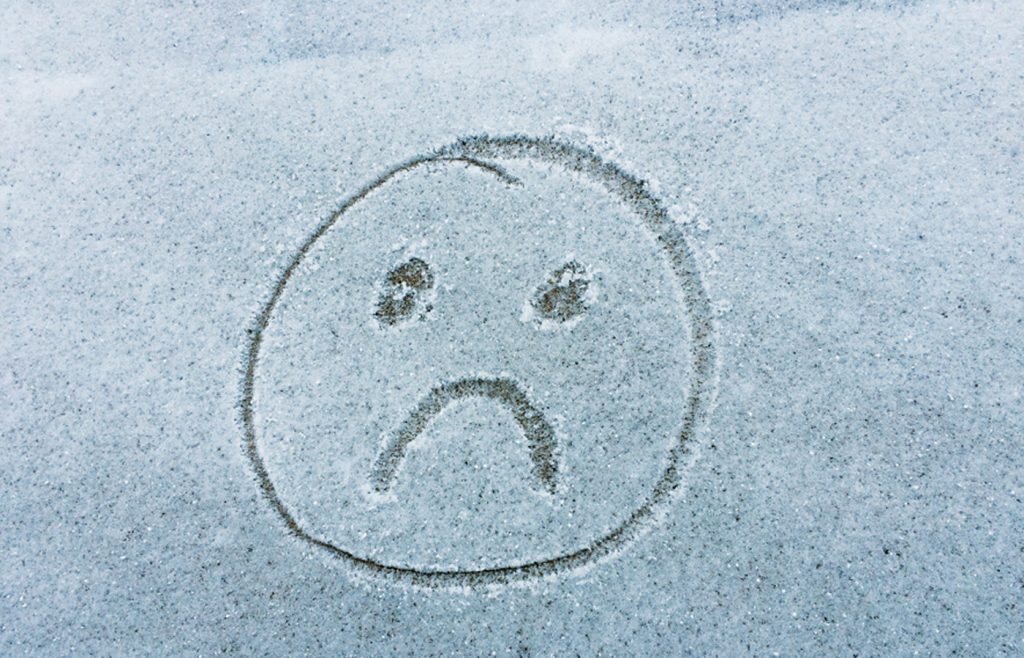
After the hectic rush of holiday celebrations, it can be hard to face the romantic pressures and expectations of Valentine’s Day. Add in gloomy winter weather, and the stage can be set for seasonal mental health issues like the winter blues and seasonal affective disorder (SAD).
According to Norman E. Rosenthal, M.D., seasonal affective disorder affects six percent of the U.S. population. Another 14 percent are affected by the winter blues. Dr. Rosenthal, a Clinical Professor at Georgetown University, has studied seasonal mood cycles for over 20 years.
SAD and its lesser incarnation, the winter blues, are linked to light. As the days become shorter and darker, people with SAD start having symptoms. They generally have trouble sleeping. They may lose interest in daily activities, have less energy, feel sluggish and hopeless, experience changes in appetite, crave carbohydrates, gain weight, have trouble concentrating, and think about death.
Anyone can be affected by seasonal depression, but SAD most commonly affects women, people between the ages of 15 and 50, residents of northern climates, and those with a family history of SAD or other forms of depression. SAD can also affect people with manic depression. Risk of SAD decreases with age. Symptoms generally begin in September or October and dissipate in April or May. SAD shares symptoms with clinical depression, but is differentiated by its seasonal onset.
According to Dr. Rosenthal, patients with SAD are particularly responsive to environmental light. Researchers suspect lack of light upsets the brain’s biological clock, which affects its serotonin balance and leads to depression. Melatonin levels are also measurably different.
Light therapy, psychotherapy, and medications are the most common treatments. Light therapy has been used successfully since the 1980s. Dr. Rosenthal says 60 to 80 percent of SAD sufferers benefit from light therapy. Morning seems to be the most effective time for light therapy, although treatments can be spread throughout the day. Most people find relief from symptoms after two to four days. Some people find that changing their household light bulbs to full-spectrum bulbs helps, although it’s not as effective as exposure to a light box.
Some hospitals and treatment facilities have light boxes. They can also be purchased at Walmart, Target, Amazon.com, and various other online sources. Make sure the light box is designed to be used for SAD. (Light boxes designed to treat skin conditions are ineffective in treating SAD). Typically, light boxes filter out the ultraviolet rays. Most people require 20 to 60 minutes of exposure to 10,000 lux of cool-white fluorescent light, which is about 20 times greater than ordinary indoor lighting. It’s most effective to start light therapy in the fall and continue through the spring.
Individuals with SAD are usually deficient in Vitamin D. Some studies have shown an improvement in symptoms, while other studies have been inconclusive. Many doctors recommend Vitamin D supplementation as part of a treatment regime. Exercise and stress management also help. Moderate exercise, especially on sunny days, is energizing, creates positive endorphins, and helps combat depression. Cognitive behavioral therapy has also been adapted to help people cope with SAD.
So if you’ve been feeling blue this winter, talk to your doctor, see a good therapist, and get outside. Medicine, therapy, and exercise can all help you cope with seasonal depression. And instead of feeling the pressure to be “in love” on Valentine’s Day, use the holiday as an excuse for some real self-love.
